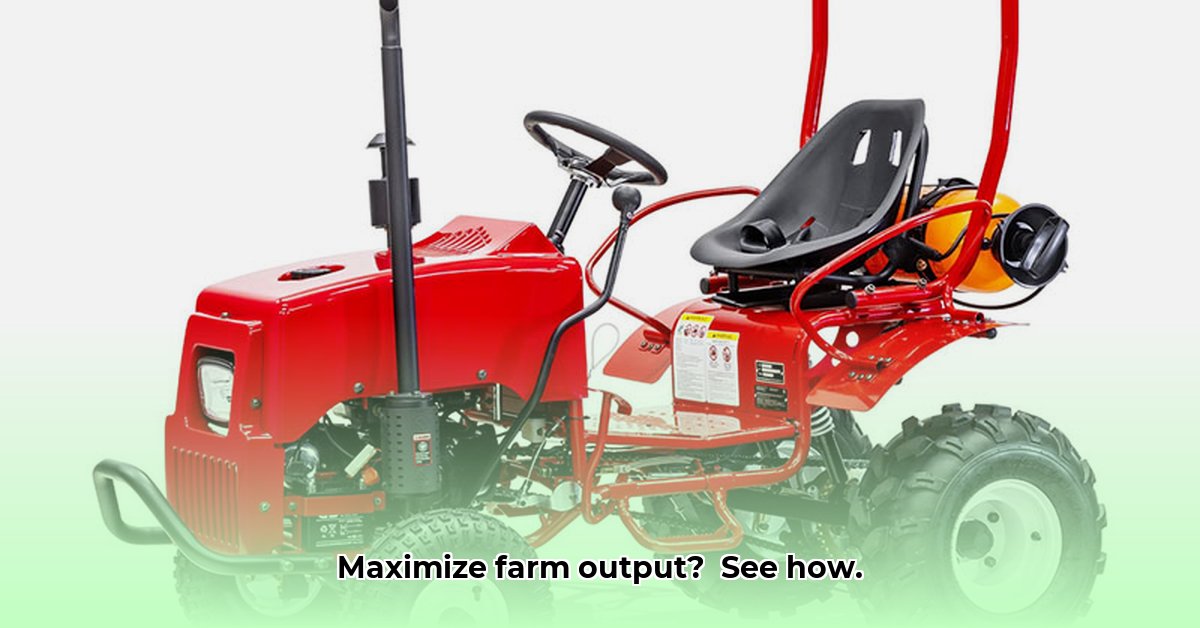
Are you a farmer looking to boost efficiency and sustainability without breaking the bank? Massimo mini tractors and utility task vehicles (UTVs) might be the answer. This review provides a balanced assessment of Massimo's offerings, focusing on their suitability for small-scale and sustainable farming practices. We'll explore their strengths, limitations, and the crucial data gaps that need to be addressed for a complete understanding. For comparison, consider researching other brands like Massey Ferguson tractors.
Massimo Mini Tractors: Small but Mighty?
Massimo mini tractors are praised for their ease of use and versatility. Farmers appreciate their maneuverability, making them ideal for tasks like weeding, tilling smaller plots, and general farm maintenance. Their compact size makes them perfect for smaller farms, hobby farms, or anyone needing a reliable, compact workhorse. However, their horsepower limitations mean they're not suited for large-scale operations or heavy-duty plowing. Matching the machine to your specific needs is key.
Do Massimo mini tractors offer the right balance of power and efficiency for your farm size? While many users report reliability, comprehensive data on fuel efficiency, maintenance costs, and lifespan is currently lacking, hindering a comprehensive cost-benefit analysis. This lack of data represents a significant gap in understanding their long-term viability.
Risk Assessment: Mechanical failure is a potential risk with any machinery. Regular maintenance, according to the manufacturer's guidelines, is crucial. A strong warranty is recommended. Furthermore, always ensure compliance with local emissions and safety regulations.
Massimo Buck 400 UTV: Accessing the Untamed
The Massimo Buck 400 UTV excels in accessibility. Its rugged design allows access to remote areas, reducing the need for larger, less environmentally friendly vehicles. This contributes to sustainable farming practices by minimizing fuel consumption and environmental impact. This capability is particularly valuable on farms with challenging terrain or dispersed resources.
However, similar to the mini-tractors, sufficient data on fuel efficiency, maintenance costs, and longevity is absent. This limitation prevents a complete comparison to alternative transportation methods. More data is required to fully analyze the Buck 400's long-term value proposition.
Risk Assessment: While built for rugged terrain, the Buck 400 UTV is still subject to mechanical issues. A robust maintenance schedule and cautious operation are essential for minimizing risks. Full compliance with local UTV operation and safety regulations is mandatory.
Massimo Machines Compared to Alternatives
A quantitative comparison to competitors is challenging due to limited data. Qualitatively, Massimo machines seem well-suited for small-scale farming or situations prioritizing maneuverability and access to remote areas. They represent a potentially cost-effective solution compared to larger equipment or manual labor for specific applications. Evaluate how a Massimo machine could enhance your current workflow by increasing efficiency and practicality.
Filling the Data Gaps: A Call for More Research
To make fully informed decisions, we need more data. The lack of information on fuel consumption, maintenance requirements, and environmental impact necessitates further research across various metrics. This data is critical for a comprehensive assessment of Massimo's products. We need:
- Independent, third-party testing to verify user experiences and provide objective performance data for fuel efficiency, power output, and maintenance schedules.
- A comprehensive life-cycle analysis encompassing manufacturing impact, fuel consumption, maintenance, and disposal to quantify the overall environmental footprint.
- Collection of long-term real-world data from a broad user base to encompass diverse operating conditions and farming practices.
Actionable Recommendations for Stakeholders
To improve our understanding of Massimo's offerings, various stakeholders must take action:
1. Individual Farmers:
- Conduct a thorough cost-benefit analysis considering purchase price, fuel consumption, maintenance, and potential repair costs.
- Establish a proactive maintenance plan based on manufacturer's recommendations.
- Explore available financing options to ease the initial financial burden.
2. Massimo Motor:
- Publish detailed technical specifications including fuel efficiency data and maintenance schedules.
- Develop improved customer service channels for direct feedback and resolution of issues.
- Invest in independent third-party testing for verifiable data on performance and reliability.
3. Researchers:
- Conduct field trials comparing Massimo equipment with competitors under various conditions.
- Develop research methodologies that gather data on fuel efficiency, maintenance requirements, and environmental impact.
- Publish findings in peer-reviewed journals to ensure accessibility and credibility of results.
4. Government Agencies:
- Offer financial incentives to promote the adoption of sustainable agricultural equipment and practices.
- Develop regulations for emission standards and safety protocols applicable to small-scale agricultural machinery.
Conclusion
Massimo mini tractors and UTVs show promise for increasing efficiency and sustainability in small-scale farming. However, their long-term viability and overall environmental impact require further investigation through rigorous, independent research and increased transparency from the manufacturer. The actionable steps outlined above are essential for bridging the current data gap and fostering informed decision-making within the agricultural community.